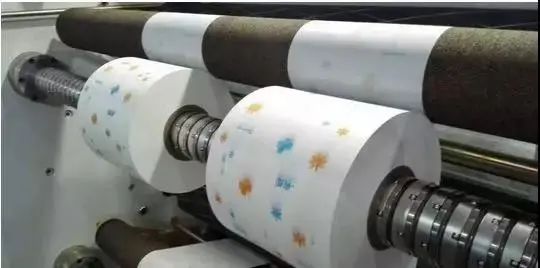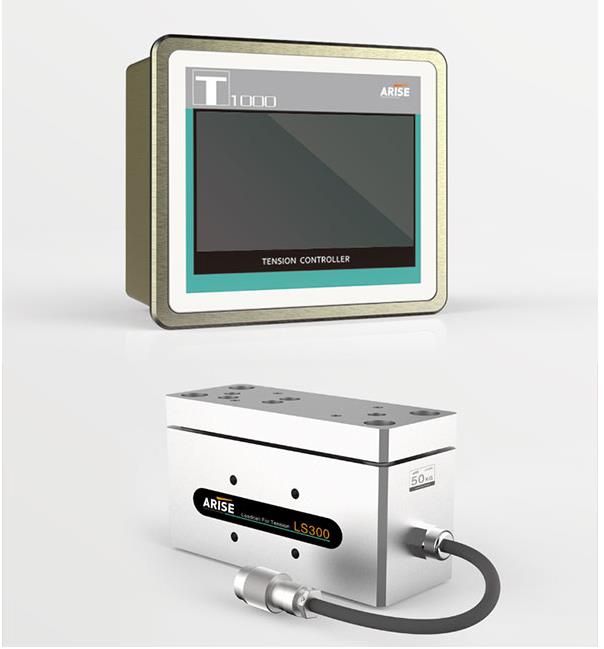Blogs
on January 17, 2024
In the dynamic world of converting machinery, where raw materials are transformed into final products, web tension control plays a pivotal role in ensuring the quality and precision of the production process. Whether creating flexible packaging, paper, textiles, or other converted products, maintaining proper tension in the continuous material being processed (the web) is paramount. This article explores the significance of web tension control in converting machinery, delving into the challenges faced and the diverse methods employed to achieve consistent and high-quality outcomes.

The Importance of Web Tension Control in Converting Machinery:
Web tension, the force applied to the material as it traverses converting machinery, is a critical parameter for several reasons:
Quality Assurance: Consistent web tension is imperative for producing high-quality final products, preventing issues like wrinkles, folds, or misalignments in the completed material.
Productivity: Precise tension control enhances the efficiency of the converting process, allowing for higher production speeds, reduced downtime due to web breaks, and ensuring a smoother workflow.
Material Savings: Accurate tension control minimizes material waste by preventing overstretching or sagging of the web, particularly important in industries where raw materials are expensive.
Challenges of Web Tension Control in Converting Machinery:
Variability in Material Properties: Processing a range of materials with different elasticity, thickness, and mechanical properties poses challenges in maintaining consistent tension.
Speed Changes: Fluctuations in tension levels occur during changes in production speed, impacting the system's ability to maintain consistent tension.
Web Slippage: Inconsistent tension can lead to web slippage, causing faults and disturbances in the manufacturing process.
Roll Diameter Changes: The changing diameter of the roll as it unwinds affects tension, presenting challenges in managing tension with different roll diameters.
Web Splicing: Splicing two webs together may result in abrupt tension shifts if not properly regulated.
Environmental Factors: Changes in humidity, temperature, or other external factors can impact material qualities and tension control requirements.
Mechanical Wear and Tear: Components such as rollers, bearings, and brakes may wear over time, affecting performance and tension control.
Complex Machine Configurations: Converting machinery with complex configurations may pose challenges in maintaining uniform tension across the entire process.
Common Methods of Web Tension Control in Converting Machinery:
Open-Loop Tension Control:
Description: Manual setting and adjustment of tension levels based on operator judgment and experience.
Application: Suitable for simple processes with minimal tension variations but lacks precision.
Closed-Loop Tension Control:
Description: Involves feedback systems to continuously monitor and adjust tension levels based on real-time data.
Application: closed-loop tension contollers Ideal for processes requiring precise tension control, offering automated adjustments for optimal tension levels.

Dancer Systems:
Description: Use rollers or arms to accumulate and release web material, creating a buffer to absorb tension variations.
Application: Effective for low to moderate tension applications, providing mechanical tension control.
Load Cells and Tension Sensors:
Description: Measure the force applied to the web at various points in the machinery.
Application: Data from load cells and sensors are used to adjust torque or braking force, ensuring consistent tension levels.
Pneumatic and Hydraulic Systems:
Description: Use air pressure or hydraulic force to apply tension to the web.
Application: Suitable for high-tension applications, offering precise tension control but can be more complex and expensive.
Motorized Unwind/Rewind Systems:
Description: Use motors to control the speed of unwinding and rewinding rolls, thereby controlling tension.
Application: Effective for processes with varying material properties, adjusting speed to maintain consistent tension.
Brakes and Clutches:
Description: Control tension by applying resistance to the material as it moves through the machinery.
Application: Cost-effective and suitable for applications where precise tension control is not as critical.
Tension-Controlled Accumulators:
Description: Accumulate and release material in reaction to tension changes, assisting in maintaining a steady flow.
Application: Useful in processes where tension variations need to be minimized, such as in the production of sensitive materials.

Conclusion:
Web tension control in converting machinery is indispensable for ensuring the quality, productivity, and efficiency of the production process. As technology advances, the industry continues to explore innovative ways to overcome challenges and improve tension control systems. From open-loop to closed-loop control, and mechanical to electronic systems, manufacturers invest in technologies that assure reliable and consistent material processing. Web tension control remains a key topic for optimizing converting machinery processes across various industries, emphasizing the importance of precision in manufacturing.
Posted in: Technology
Topics:
web tension control
Be the first person to like this.





